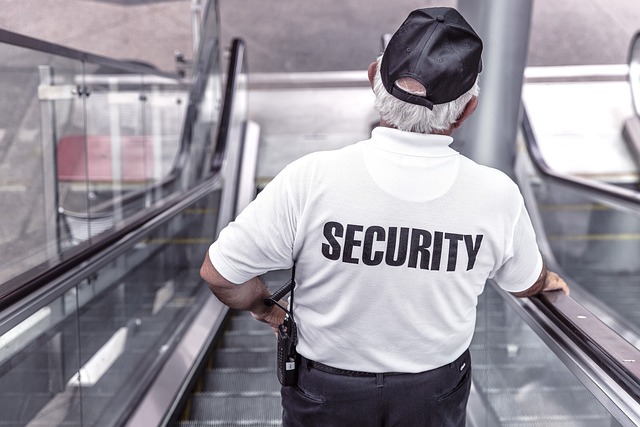When choosing a home security system, consider your specific security needs, location, crime rates, and property features to determine the right level of security. Opt for sophisticated surveillance systems in high-risk areas or simpler deterrents for less exposed homes. Assess threats beyond burglary, including fires, floods, and other environmental hazards. Today's home security options range from basic entry-level sensors to advanced smart home integrations with real-time alerts on mobile devices. Tailor your system to fit your lifestyle, routine, and budget, whether you're frequently traveling or have a household with children or pets. Evaluate the pros and cons of wireless versus wired systems based on your home's size, tech comfort, and security concerns; both can offer effective protection but in different ways. Ensure a robust system with high-definition surveillance cameras, motion detectors, environmental threat detectors, and smart home automation for safety and convenience. When selecting a provider, consider their reputation, customer feedback, monitoring capabilities, and technological sophistication to ensure reliable and efficient security solutions. Strategically place security components for comprehensive coverage, taking into account potential entry points and weaknesses. Smart integration with devices like door locks and lighting systems can enhance security and allow for remote management of your system. Regular maintenance, including updates and checks, is vital to keep up with evolving security threats. Home Security systems are crucial investments for safeguarding your home and providing peace of mind.
When safeguarding your home, selecting a security system tailored to your specific needs is paramount. This comprehensive guide delves into the essentials of choosing the ideal home security solution. We’ll navigate through understanding your risks and setting priorities, evaluating the strengths of wireless versus wired systems, key components for robust protection, and crucial factors when selecting a provider. Additionally, we’ll cover best practices for installation and integration to ensure your system offers optimal protection. Home Security is a critical investment, and this article equips you with the knowledge to make informed decisions, ensuring your home remains a fortress of safety and peace of mind.
- Understanding Your Home Security Needs: Assessing Risks and Priorities
- Evaluating Home Security System Types: Wireless vs. Wired Systems
- Key Components of a Robust Home Security Setup
- Factors to Consider When Selecting a Provider: Reputation, Monitoring Services, and Technology
- Installing and Integrating Your Home Security System: Best Practices and Tips for Optimal Protection
Understanding Your Home Security Needs: Assessing Risks and Priorities

When selecting a home security system that aligns with your specific needs, it’s crucial to conduct a thorough assessment of potential risks and establish your security priorities. Begin by evaluating the vulnerabilities of your property; consider factors such as geographic location, crime statistics in your neighborhood, and the physical characteristics of your home. High-risk areas or those with frequent break-ins might necessitate more advanced surveillance systems, while homes in lower-risk zones may suffice with basic deterrents. Reflect on the types of threats you’re most concerned about, whether it’s burglary, intrusion, or environmental hazards like floods or fires. Home Security systems today offer a range of solutions, from door and window sensors to motion detectors, cameras, and smart home integration that can send real-time alerts to your phone. Prioritize features that align with your daily routine, lifestyle, and budget. For instance, if you frequently travel, prioritize remote monitoring capabilities. If you have young children or pets, prioritize systems with two-way voice communication for immediate assistance. By understanding your unique situation, you can choose a system that offers the right balance of coverage, connectivity, and cost to protect your home effectively. Home Security systems are not one-size-fits-all; they are tailored solutions designed to provide peace of mind by safeguarding what matters most to you.
Evaluating Home Security System Types: Wireless vs. Wired Systems

When considering a home security system, discerning between wireless and wired options is a pivotal decision that impacts both functionality and security. Wireless systems boast a level of versatility and ease of installation that is hard to match; they rely on radio waves instead of physical cables to transmit signals. This eliminates the vulnerability associated with cutting wires, as intruders cannot sever the connection as easily. Additionally, wireless home security systems are typically more adaptable to a home’s layout, making them an excellent choice for both new constructions and existing properties undergoing renovation. They often include smart home capabilities, integrating seamlessly with other devices like cameras, door locks, and motion sensors, thus enhancing your Home Security protocol.
On the other hand, wired systems are traditionally known for their reliability due to their direct connection to a central monitoring station. This hardwired aspect can provide clearer signals and may be less susceptible to certain types of interference compared to wireless options. For homeowners concerned about power outages, many wired systems include battery backups to ensure continuous operation during temporary losses of electricity. While installation can be more complex and potentially disruptive than wireless setups, wired systems can offer a more robust solution for those prioritizing a reliable connection over the flexibility offered by their wireless counterparts. In both cases, it’s essential to assess your home’s specific needs, your personal preferences, and the level of security you desire when choosing between a wireless or wired Home Security system. Consider factors such as the size of your residence, your technical proficiency, and any particular vulnerabilities that need addressing. Ultimately, the right system is one that aligns with your home’s specific requirements and provides you with peace of mind.
Key Components of a Robust Home Security Setup

When constructing a comprehensive home security setup, it’s crucial to consider various key components that work together to safeguard your residence effectively. A robust home security system typically includes a combination of surveillance cameras strategically placed around the property to monitor for any unusual activity or unauthorized entry attempts. High-definition cameras with night vision capabilities ensure that your home remains under watch, day and night. In addition to visual deterrents, motion detectors can be integrated to trigger alarms upon sensing unexpected movement, alerting you and the authorities immediately. These devices are often connected to a central monitoring system that can notify homeowners of potential breaches via smartphone apps or landline connections.
Beyond perimeter protection, it’s important to secure access points. This includes sturdy door frames and reinforced locks on all external doors. For windows, consider sensors that sound an alarm if tampered with. A reliable home security system also encompasses environmental threat detectors, such as smoke and carbon monoxide detectors, which are vital for early detection of fires or gas leaks. Lastly, smart home automation can be integrated into your security system to control lighting, thermostats, and other connected devices remotely, giving you greater oversight over your property’s security. This level of integration not only enhances safety but also provides convenience and energy efficiency. By carefully selecting each component and ensuring they are compatible with one another, homeowners can create a comprehensive home security system tailored to their specific needs.
Factors to Consider When Selecting a Provider: Reputation, Monitoring Services, and Technology

When selecting a home security provider, one must carefully weigh various factors to ensure optimal protection and peace of mind. A provider’s reputation in the market is a critical aspect to consider; it reflects their reliability and past performance. Look for companies with a history of dependable service and positive customer reviews. These indicators often suggest a provider’s dedication to security solutions and customer satisfaction. Additionally, evaluate the monitoring services on offer. Round-the-clock surveillance can be a deciding factor in choosing your home security system. Real-time monitoring not only deters potential intruders but also provides immediate response to emergencies, ensuring that help is dispatched swiftly should an incident occur. Furthermore, the technology employed by a security system plays a pivotal role in its effectiveness. Advanced features such as motion sensors, smart locks, and surveillance cameras with high-resolution capabilities can significantly enhance the security of your home. Ensure the system is compatible with various devices for seamless integration into your daily life, and consider options that allow remote access and management through mobile apps. By focusing on a provider’s reputation, monitoring services, and technological sophistication, you can make an informed decision tailored to your specific home security needs.
Installing and Integrating Your Home Security System: Best Practices and Tips for Optimal Protection

When installing a home security system, it’s crucial to ensure that every component is placed strategically for optimal protection. Begin by assessing your home’s layout to identify entry points and vulnerabilities that could be exploited by intruders. Position sensors and cameras where they have clear lines of sight but are not easily accessible or visible from the outside. This will allow your system to detect unauthorized activity without giving potential trespassers a chance to disable it.
Integration with smart home technology can significantly enhance your security system’s effectiveness. Connect door locks, lighting systems, and alarm panels so they communicate seamlessly. For instance, lights can turn on automatically when unexpected movement is detected, or the system can send real-time alerts to your phone when a door is unlocked. Such integration not only acts as a deterrent but also provides you with remote control over your security measures, allowing for proactive monitoring and instant response to suspicious activities. Always refer to the manufacturer’s guidelines for optimal placement and functionality of devices, and consider consulting a professional for installation to ensure everything is properly set up for the highest level of home security. Regularly test your system and update its software to safeguard against new threats, ensuring that your home remains secure against evolving risks.
In conclusion, selecting the right home security system is a decision that should be made with careful consideration of your specific needs and risks. Whether you opt for a wireless or wired system, understanding the key components that contribute to robust protection is paramount. Your choice of provider should be informed by their reputation, the monitoring services they offer, and the cutting-edge technology at their disposal. Proper installation and integration of your home security system are essential steps to ensure optimal protection. By thoughtfully evaluating these aspects, you can safeguard your home effectively. For comprehensive home security solutions, prioritize systems that align with your unique priorities and risks. Remember, the best home security system is one that fits seamlessly into your daily life while providing peace of mind against potential threats.
